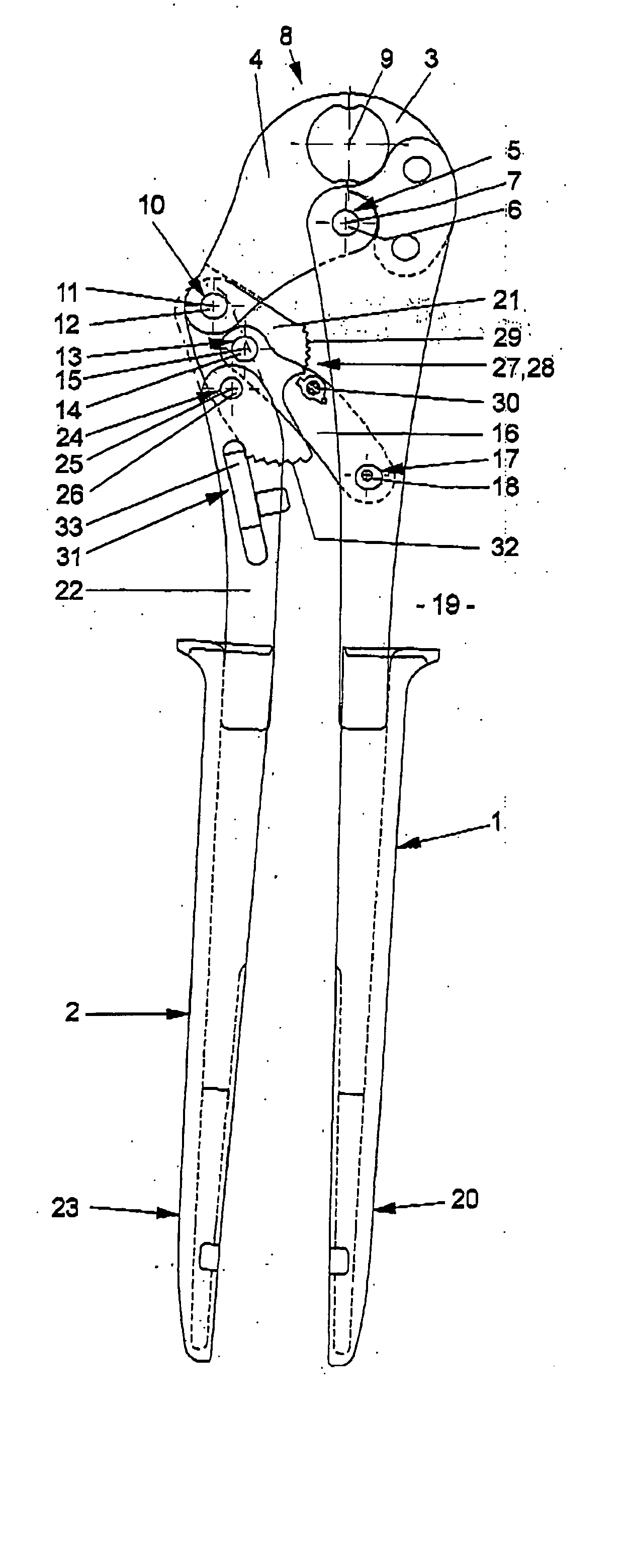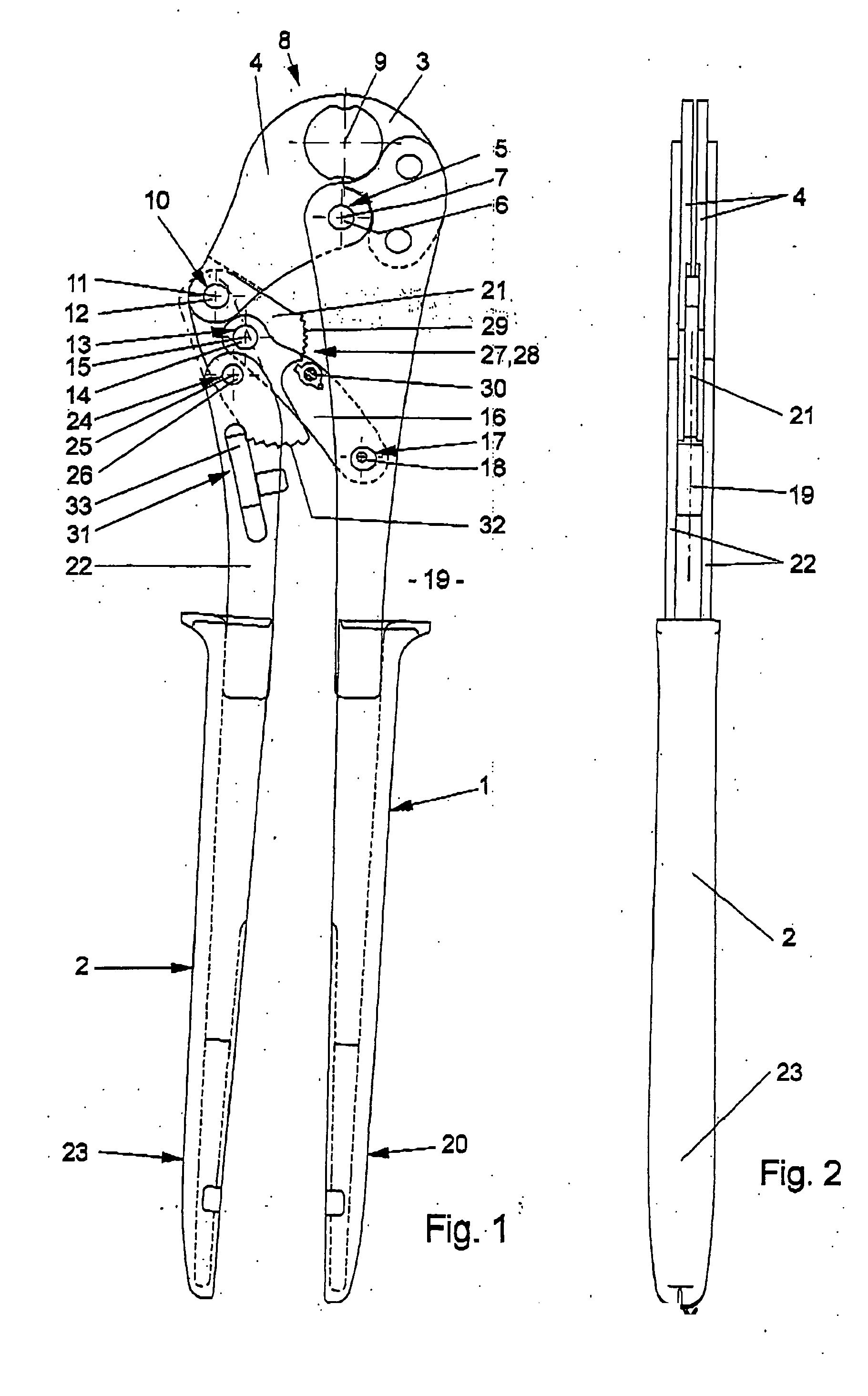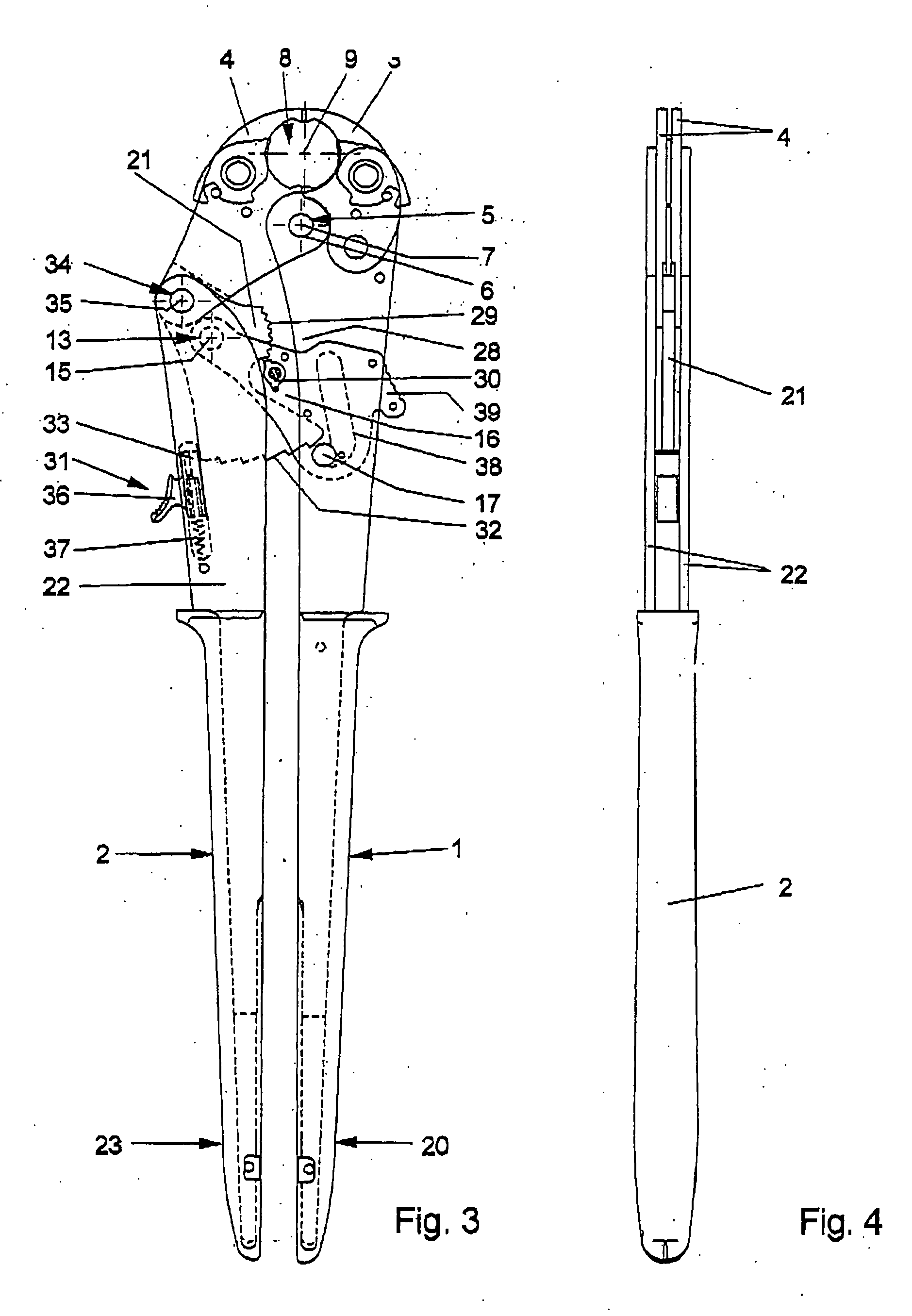Pliers for crimping work pieces
a technology for crimping work pieces and pliers, which is applied in the direction of pliers, metal-working hand tools, manufacturing tools, etc., can solve the problems of the relative position of the two portions of the movable handle being buckled in a somewhat awkward way, and achieve the effect of easy production by punching
- Summary
- Abstract
- Description
- Claims
- Application Information
AI Technical Summary
Benefits of technology
Problems solved by technology
Method used
Image
Examples
Embodiment Construction
[0026] Referring now in greater detail to the drawings, FIG. 1 illustrates a first exemplary embodiment of the novel pliers including handles 1 and 2. The handle 1 is fixedly connected to a pivot jaw 3 to be commonly rotated and such that these two elements form a stationary portion of the pliers. The pivot jaw 3 and the handle 1 may also be designed as one piece. The handle 1 is also referred to as stationary handle, although, for an activation of the pliers, it is only important that there is a relative movement of the handles 1 and 2 with respect to one another. In addition to the stationary pivot jaw 3, there is a movable pivot jaw 4 being pivotally connected to the stationary portion of the pliers 1, 3 by a joint 5. The stationary handle 1 may be designed as a semi shell or to have a plate design such that its legs or plates extend approximately symmetrically to the plane of main extension 19 of the pliers. The same applies to the movable handle 2. A pin 6 extends through the l...
PUM
 Login to View More
Login to View More Abstract
Description
Claims
Application Information
 Login to View More
Login to View More - R&D
- Intellectual Property
- Life Sciences
- Materials
- Tech Scout
- Unparalleled Data Quality
- Higher Quality Content
- 60% Fewer Hallucinations
Browse by: Latest US Patents, China's latest patents, Technical Efficacy Thesaurus, Application Domain, Technology Topic, Popular Technical Reports.
© 2025 PatSnap. All rights reserved.Legal|Privacy policy|Modern Slavery Act Transparency Statement|Sitemap|About US| Contact US: help@patsnap.com



